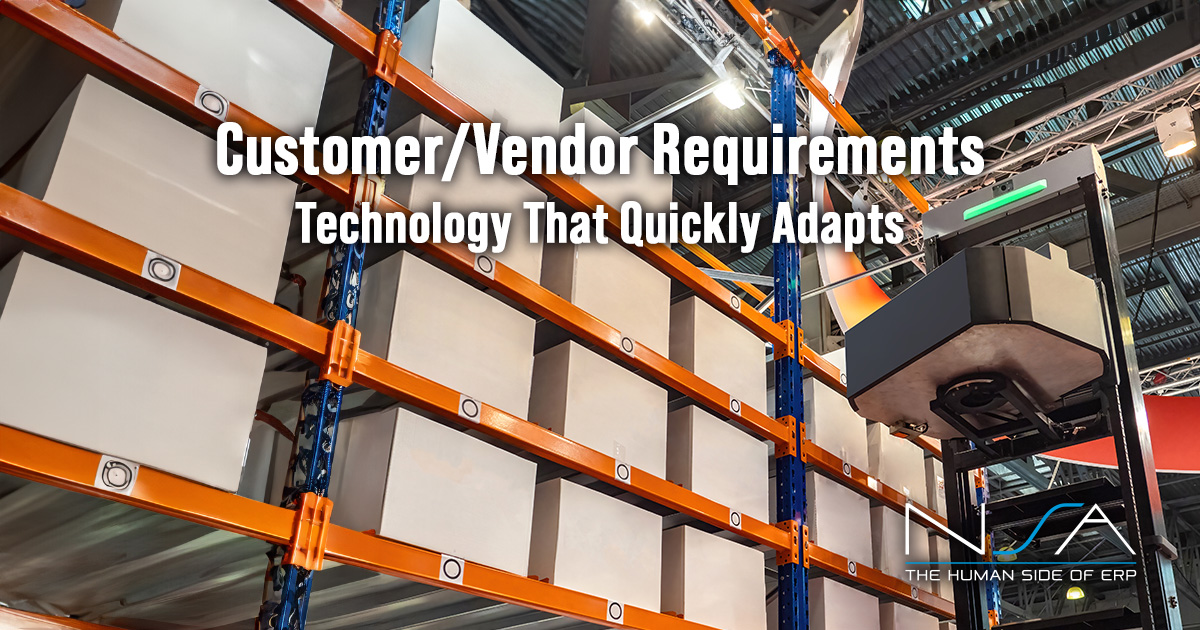 According to Statista, the sale of ERP software solutions is expected to explode, reaching $32.6 billion in annual revenues by 2016. Enterprise Resource Planning software for Distribution businesses, software suites written to grant businesses unified access to inventory control programs, supply chain management systems, and other crucial business functionality, has revolutionized the way most companies operate, so the increase in sales should surprise no one.
According to Statista, the sale of ERP software solutions is expected to explode, reaching $32.6 billion in annual revenues by 2016. Enterprise Resource Planning software for Distribution businesses, software suites written to grant businesses unified access to inventory control programs, supply chain management systems, and other crucial business functionality, has revolutionized the way most companies operate, so the increase in sales should surprise no one.
However, the problem, as tends to be the case with these claims, is that they’re just that. As written on Business Computing World, ERP programs can save your company money, improve your employees’ productivity overall, and make it easier to manage your day to day tasks. For RM Foods, a long running food and beverage manufacturer, the benefits of ERP programs have ceased to be academic.
Case Study: How RM Foods Learned to Thrive with ERP Programs
RM Foods, as written on ZDNet, is a very successful food company that has operated for more than 50-years. Most notably, the firm works with Trader Joe’s, Sam’s Club, Costco, and many more of the biggest names in food retail in the United States. However, there was a time when the company saw itself go stagnant, so much so that it eventually sought bankruptcy protections. By successfully implementing ERP programs into their business, the firm tripled its revenue in under a year, coming out from under the weight of bankruptcy in record time. Here’s how they did it:
1. Phased Implementation
The smartest move RM Foods made was the choice to take a slow, phased approach to their implementation of ERP programs. They first gave their employees, both at the executive and retail levels, comprehensive training on the different parts of the new software. From there, they looked at what new features they could slowly implement into their business. Whether it was a new bar code system that linked up with their warehousing management system or otherwise, the now extremely successful business took things one step at a time.
2. Realistic Goals
By setting realistic goals and taking a “do-or-die” approach to each one of those objectives, RM Foods was able to pull itself out of a hole. Their method was simple enough. They set a goal for what they wanted to see out of their new ERP program. After reaching that goal, they moved on to the next step.
3. They Don’t Try to Do It by Themselves
Even today, years after RM Foods first began using comprehensive ERP solutions, the company remains willing to ask for help when they need it. When they have a new idea for an ERP feature they’d like to implement, the company doesn’t do it alone. In the profile of RM Foods on ZDNet, Michael Siegmund, president, said that this approach is all about taking calculated, minimized risks. “By taking a progressive approach we minimized risk, the chance for failure, and that helped us a lot,” Siegmund said of the ongoing improvement of his company’s ERP program.
The success of RM Foods speaks to the potential of ERP programs, no matter what type of business you run. Learn from the mistakes and successes of companies like RM Foods, and you can have a similarly successful experience.
Have you implemented ERP programs in your own business to similar effect? Let us know in the comments below.
To learn more about how you can change the way you work, call or email us:
516.240.6020 – solutions@nsa.yourdmc.com
Founded in 1984, NSA’s 30 years of experience have taught us what works and, equally important, what does not. We understand that implementing a new software system isn’t your highest priority – running your business is. That is where we come in. We take the reins as much, or as little, as your company needs.


